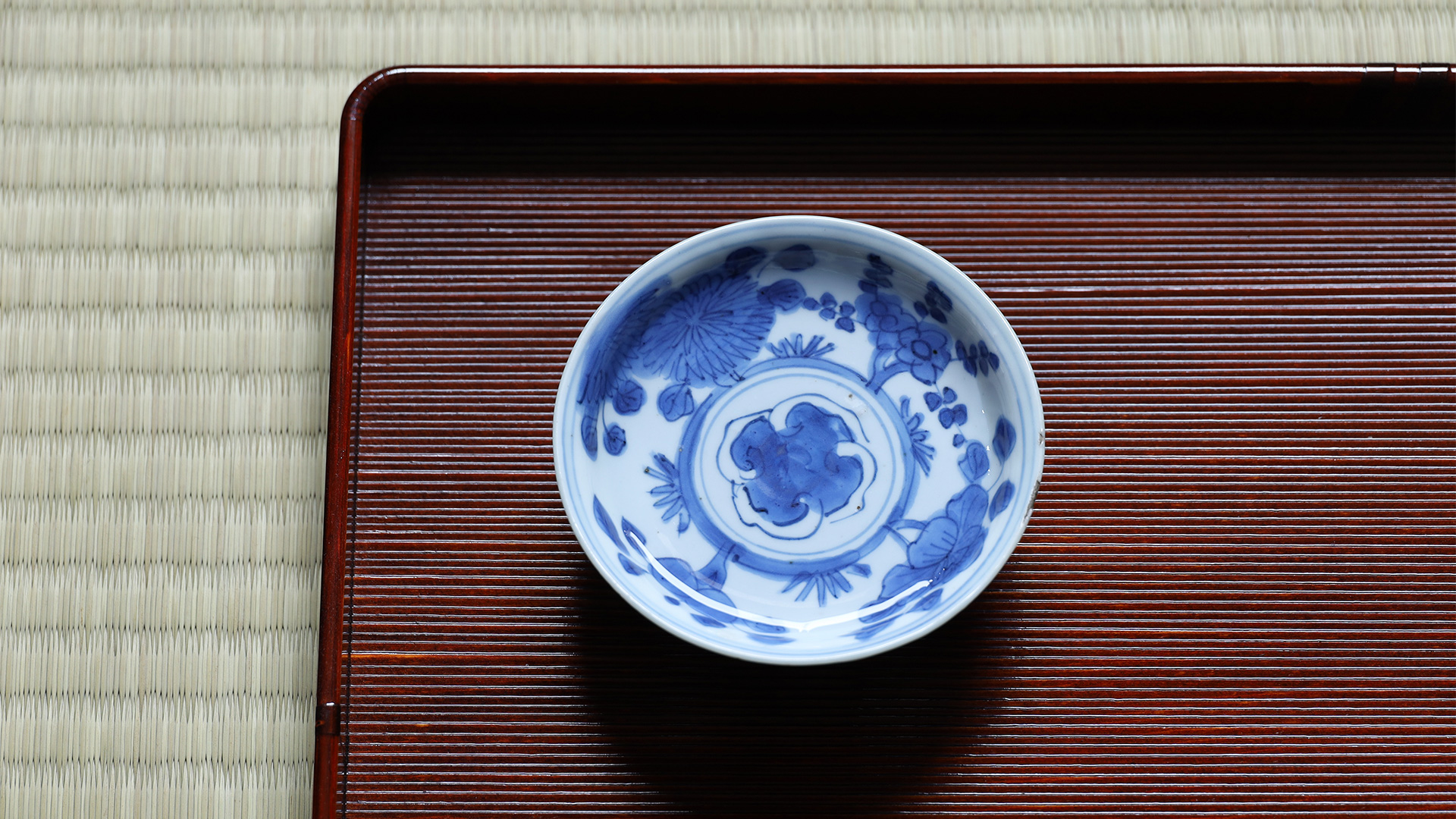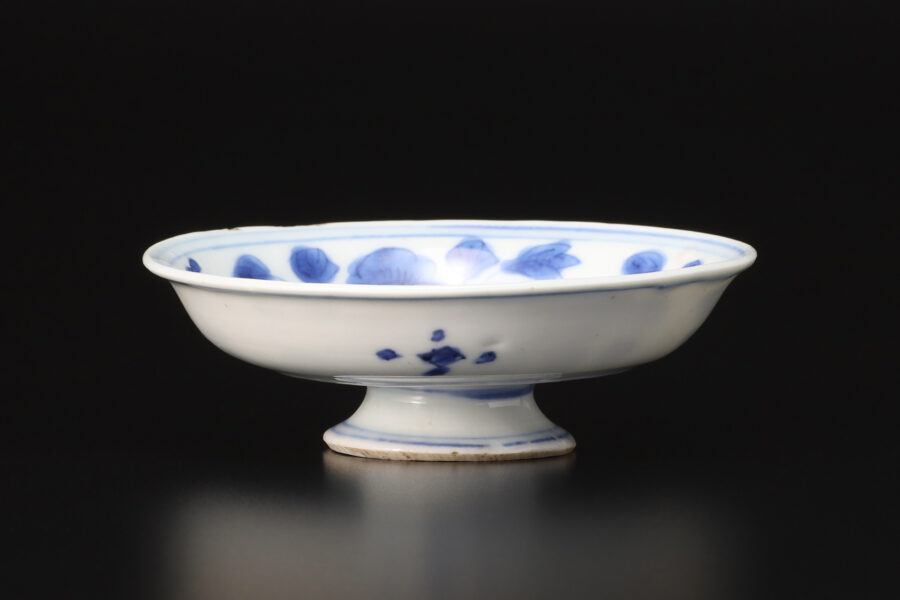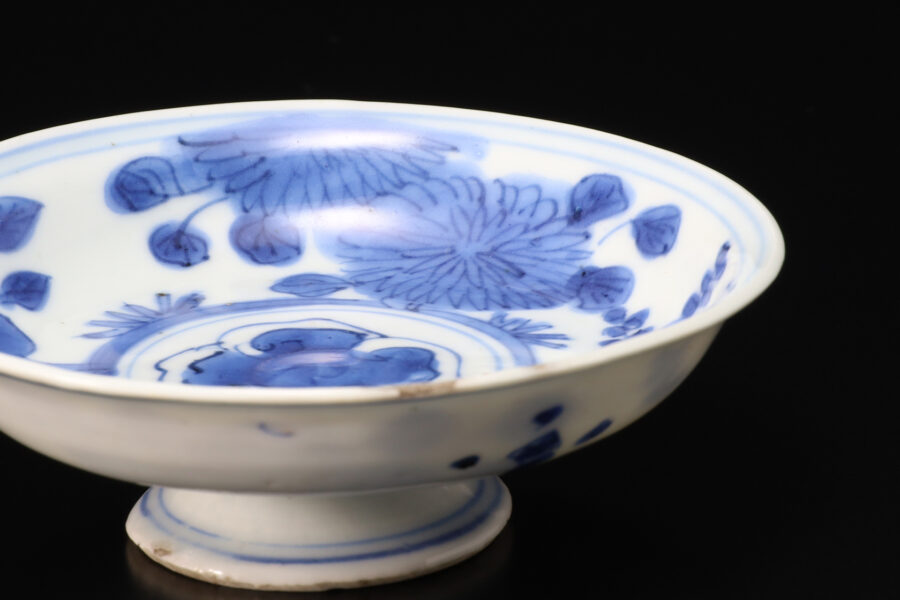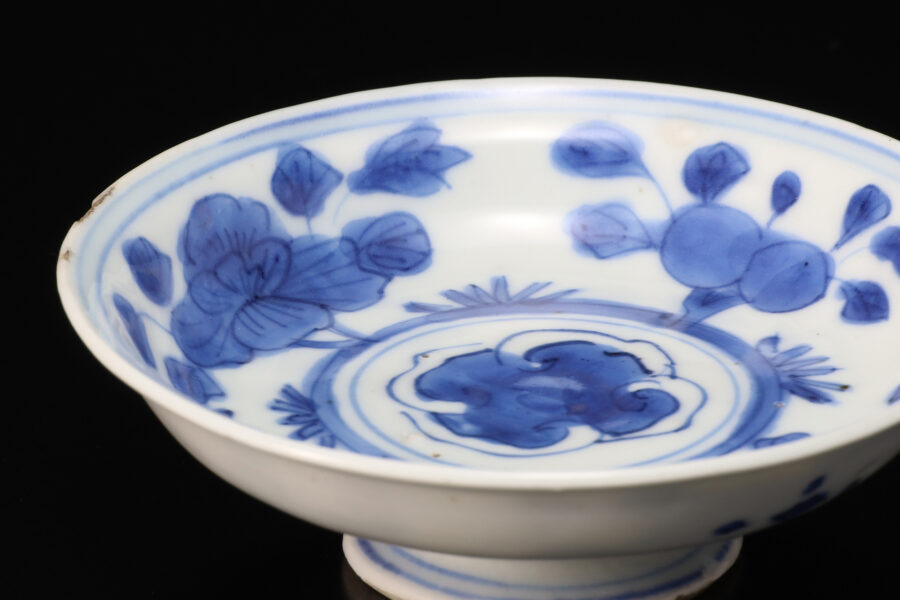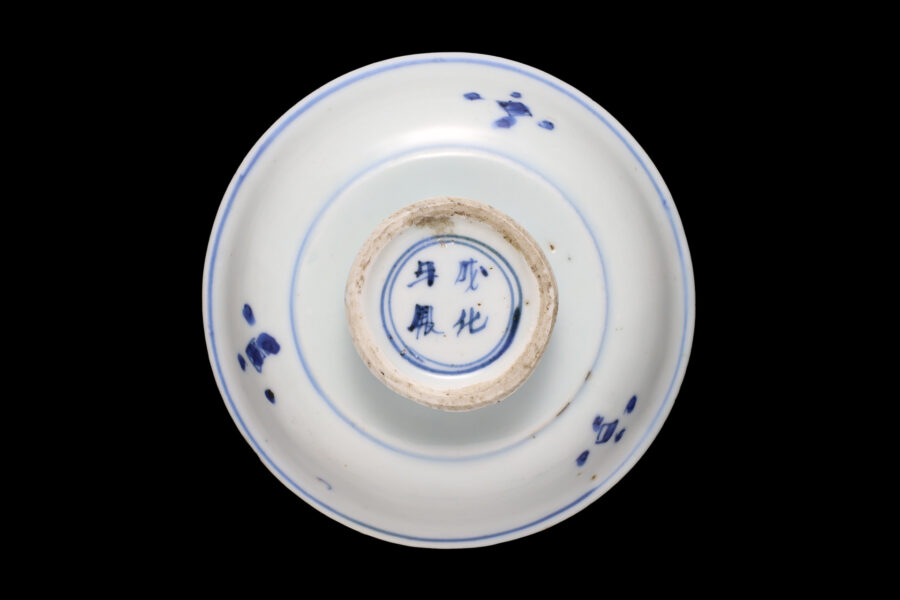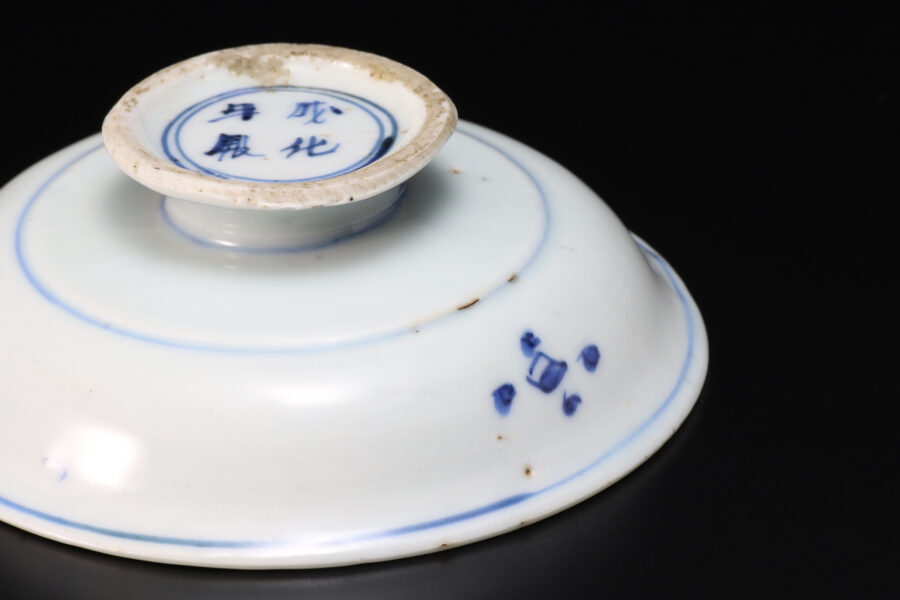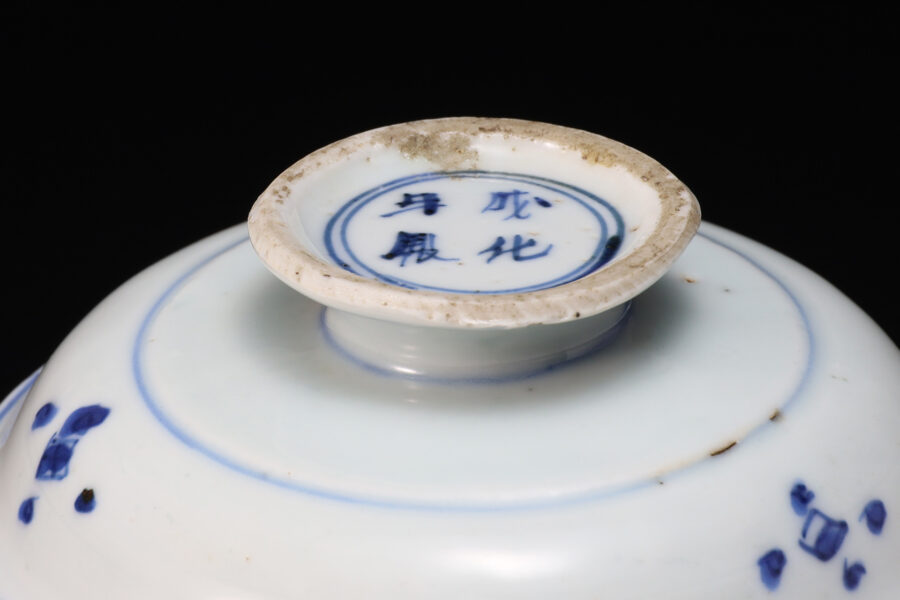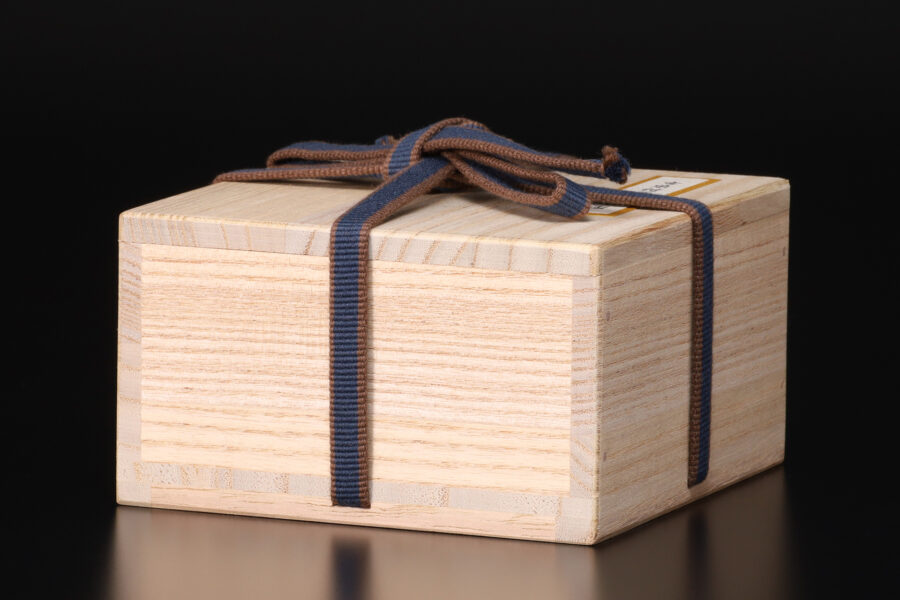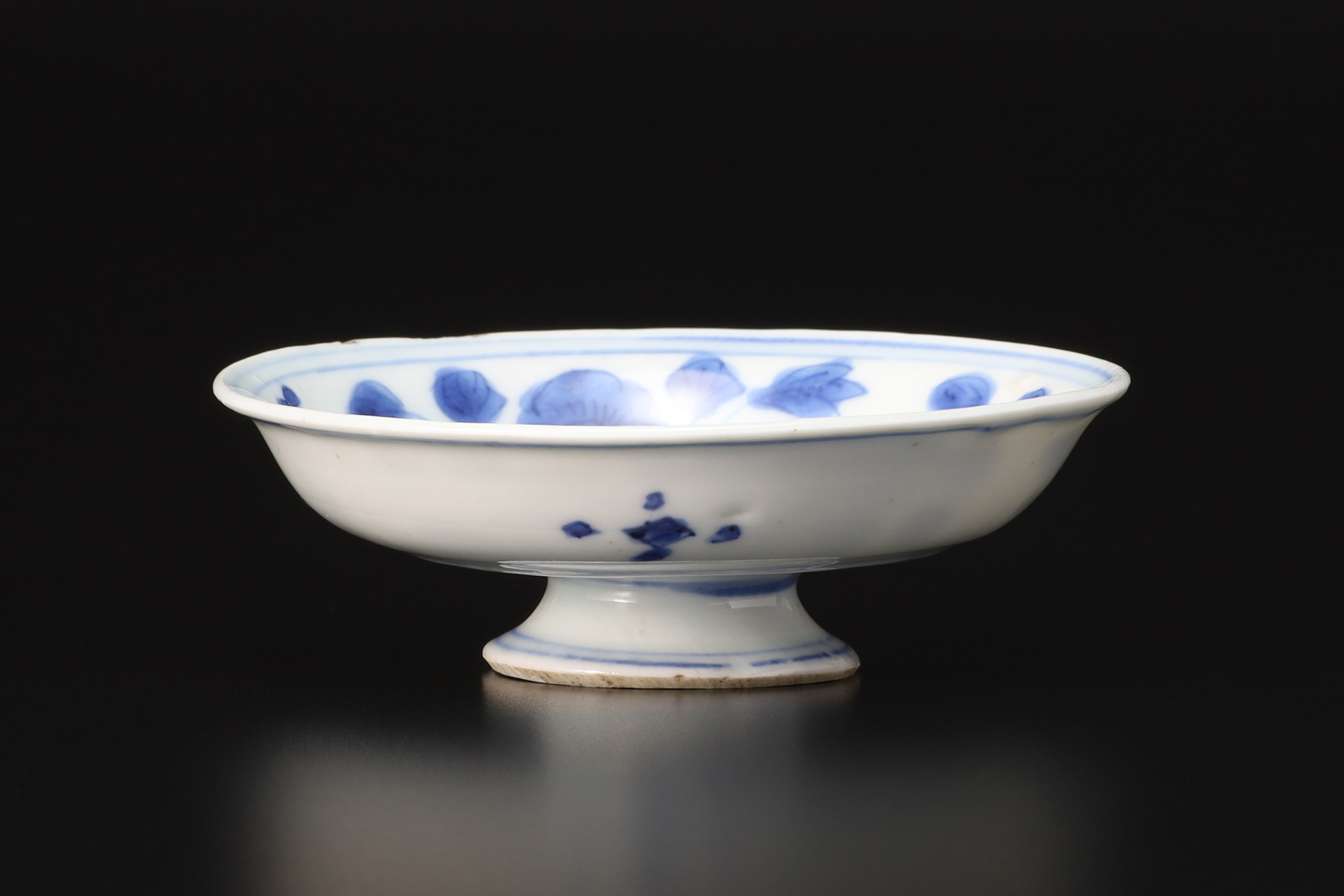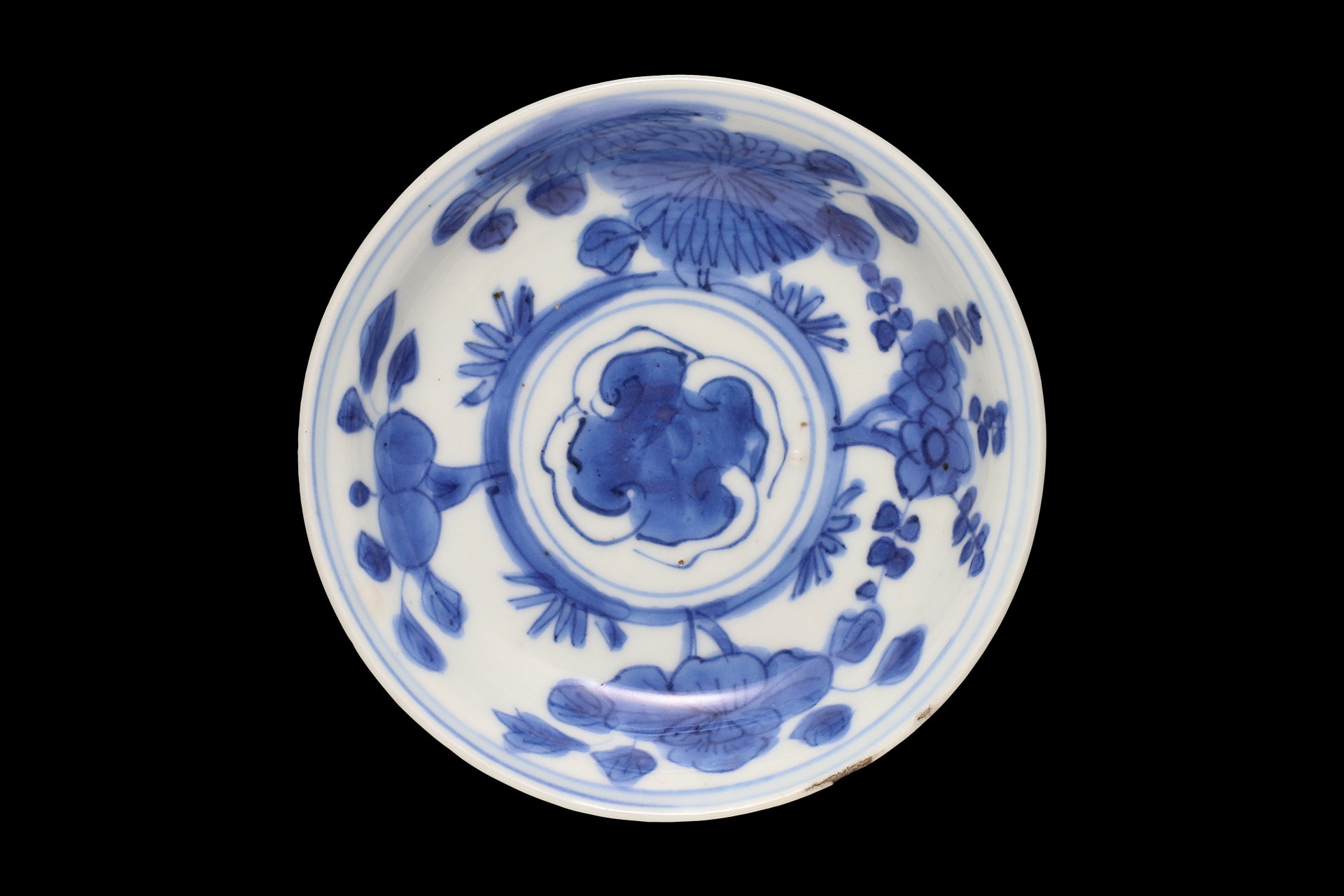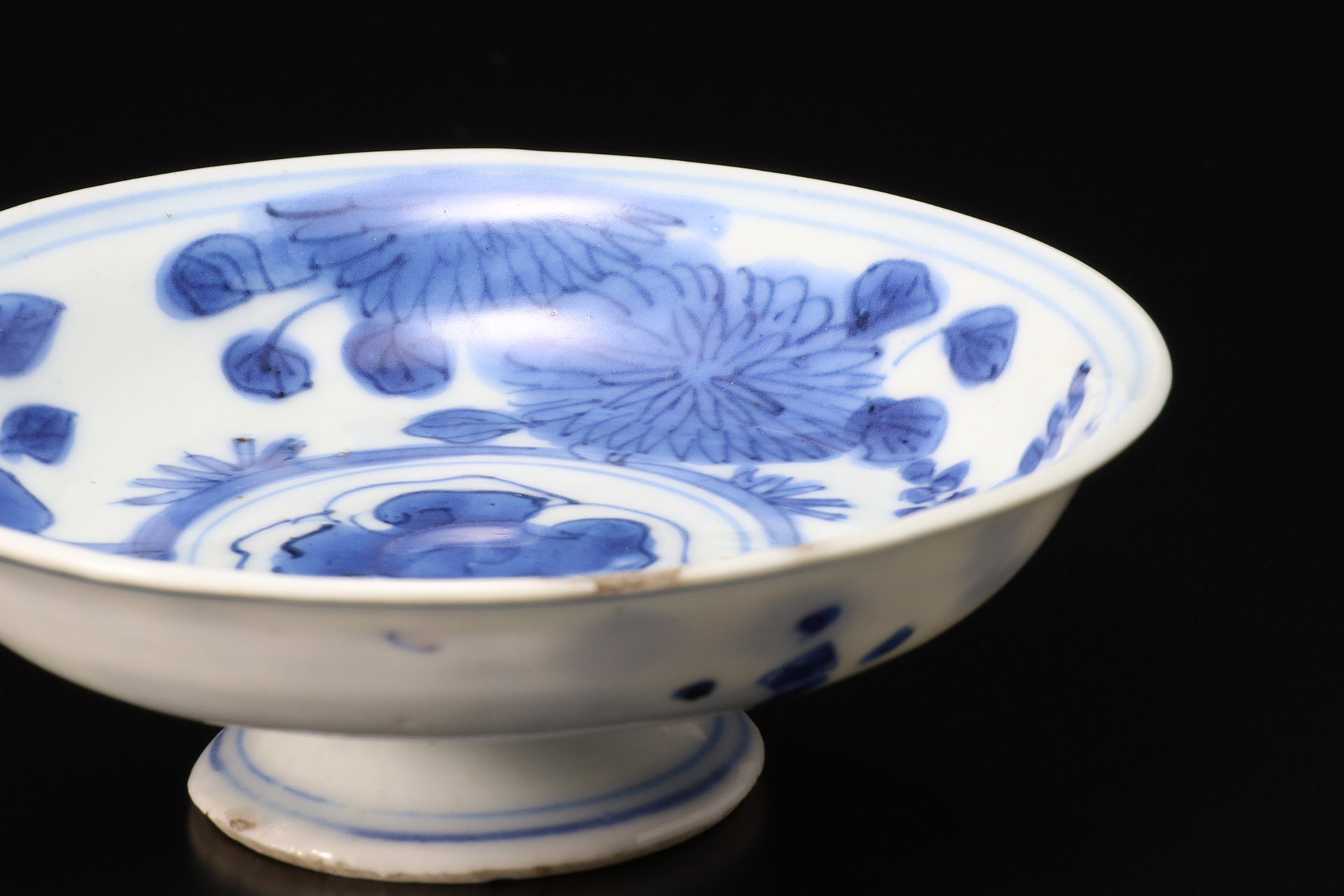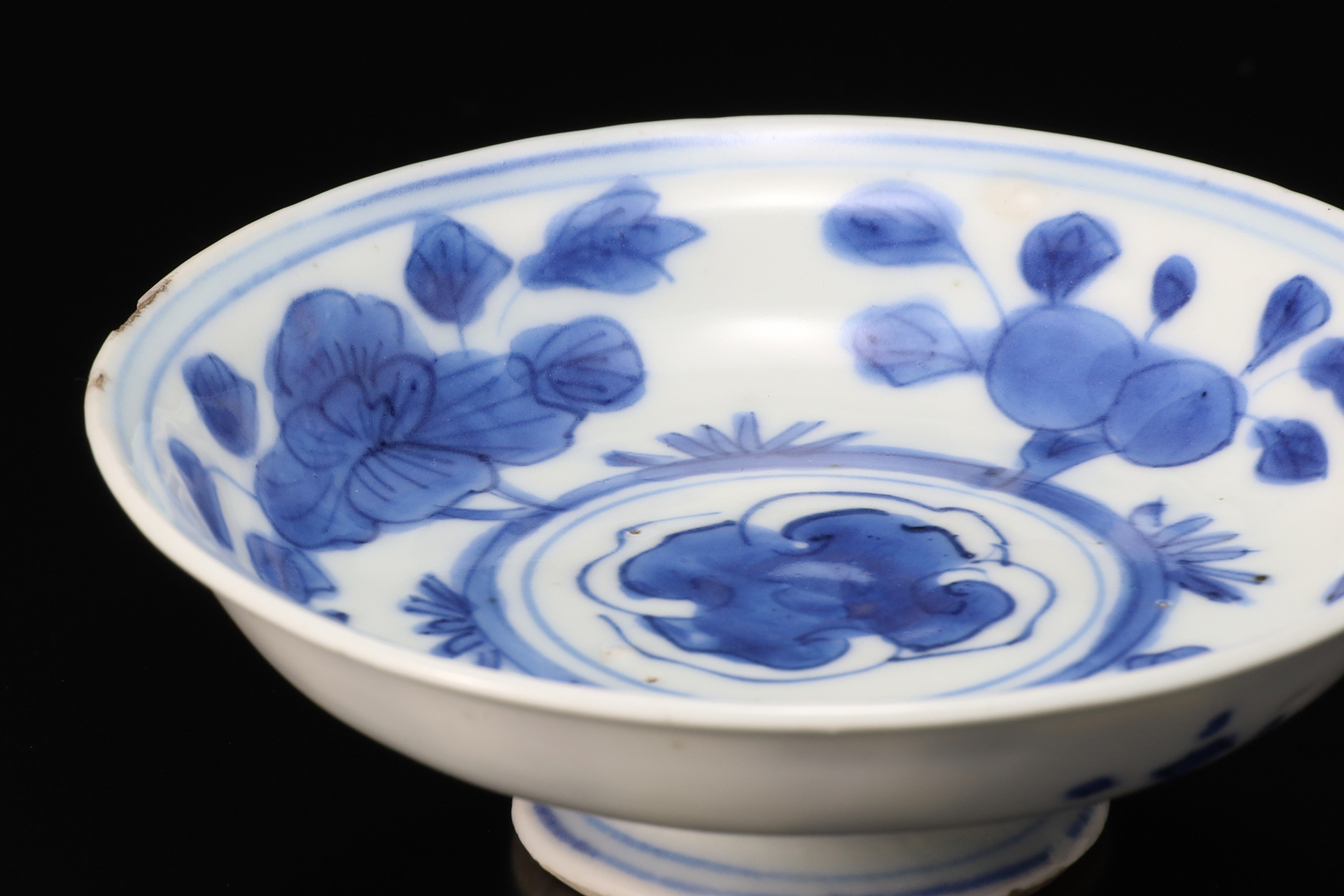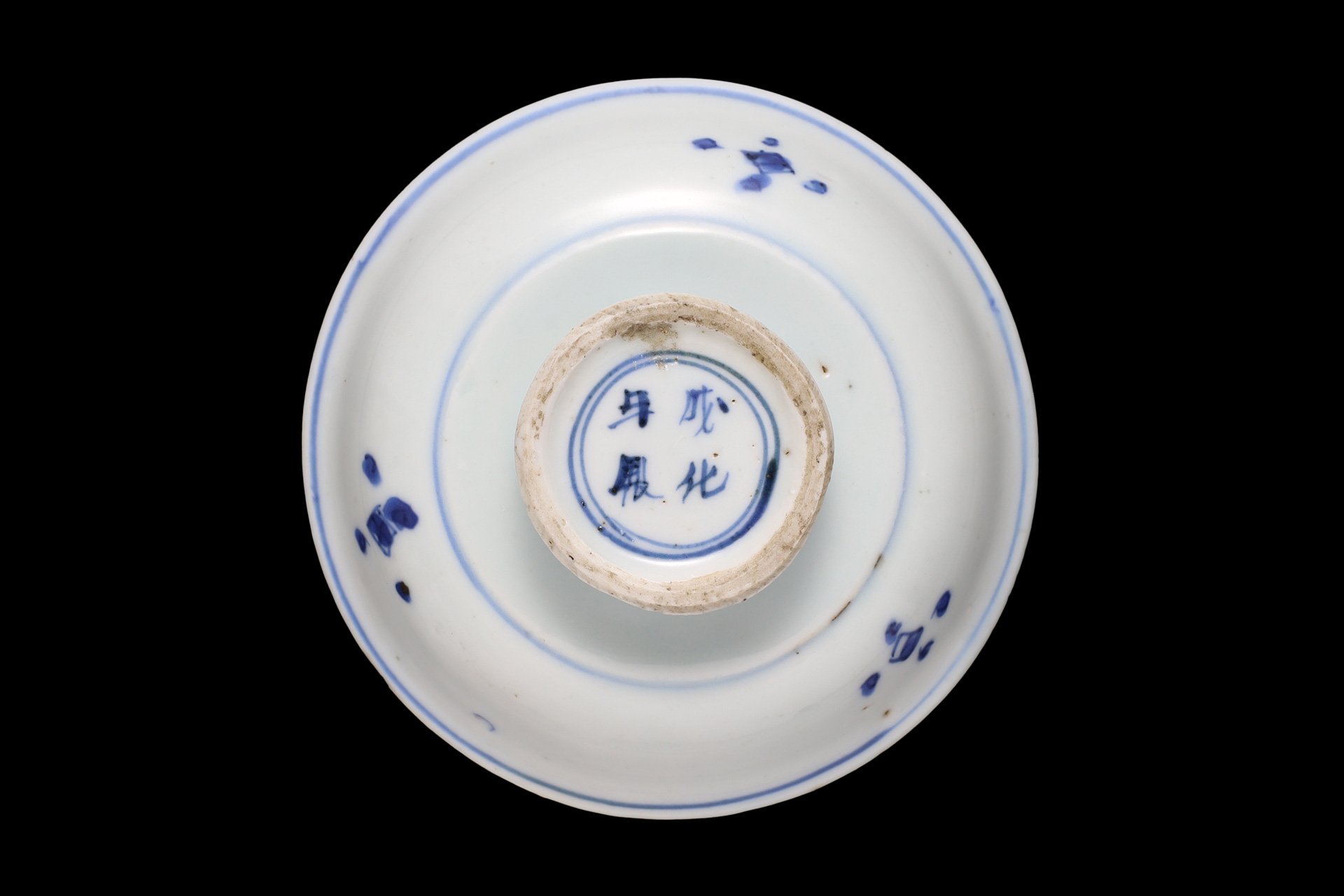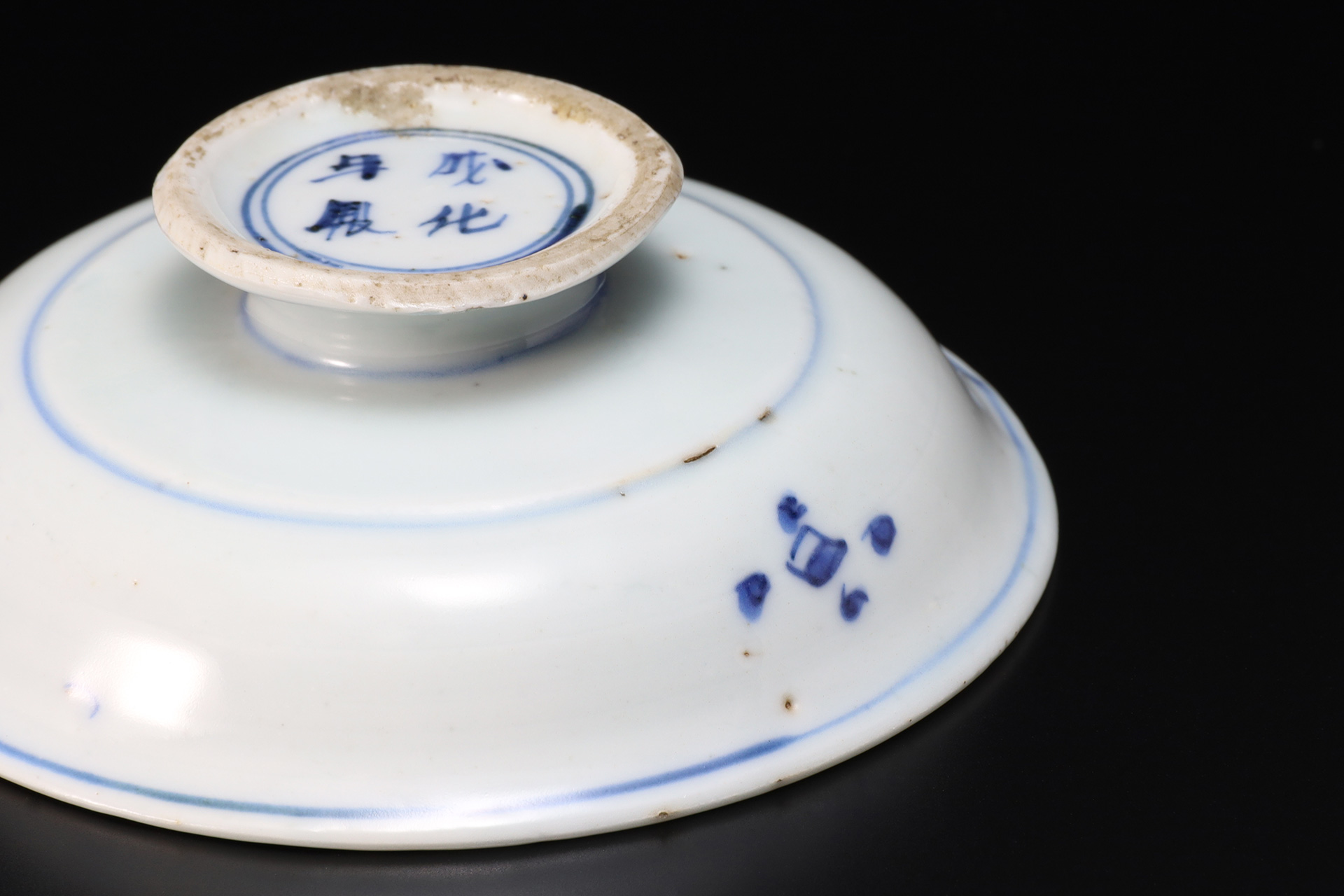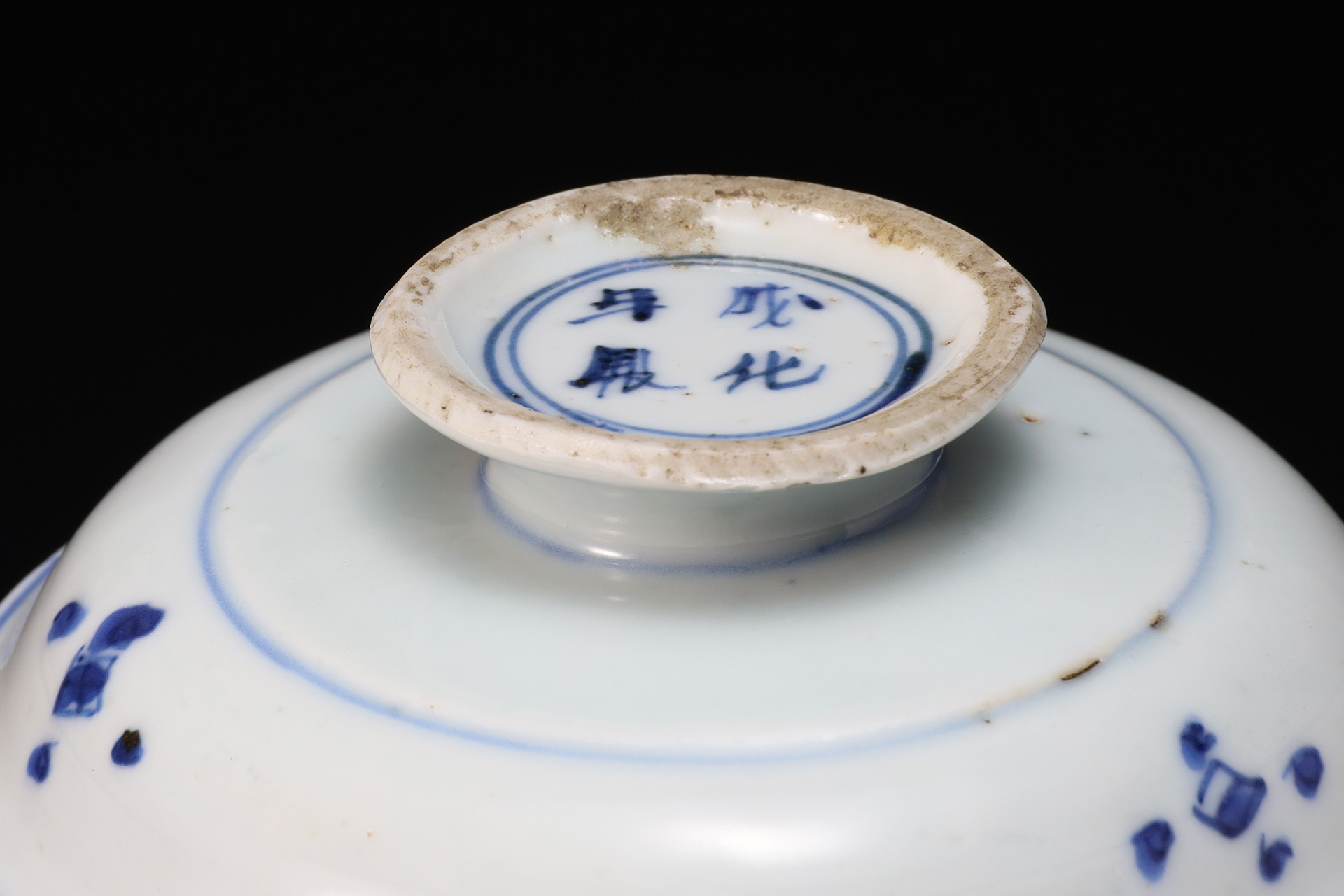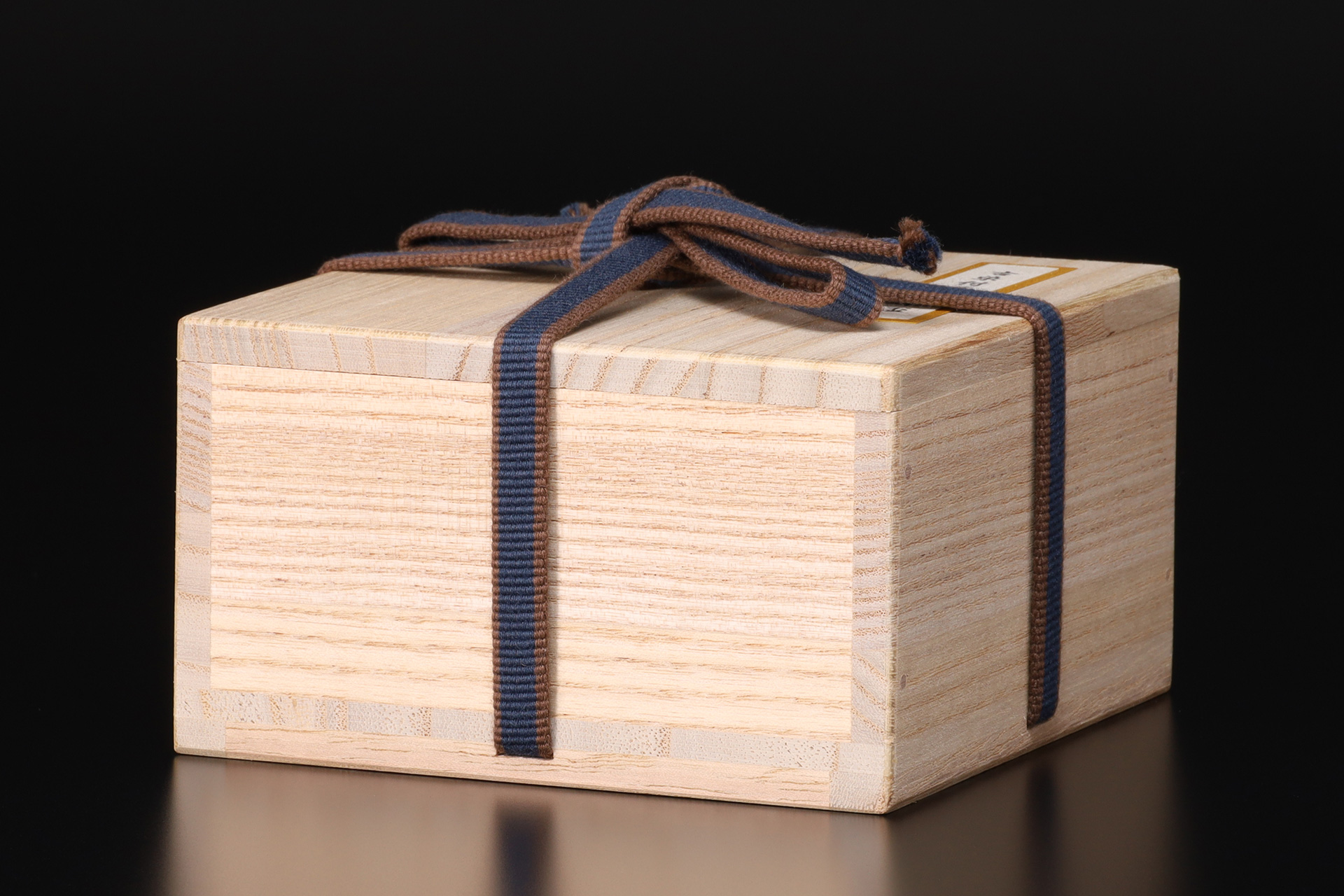Kosometsuke Flat Sake Cup with Design of Flower(Ming Dynasty)
100,000Yen(Tax Included)
This kosometsuke is the magnificent work with brilliant blue-and-white coloring. It is thought that it was originally a small dish with a stand ordered by japanese tea master, but it is deep enough and is perfect for a flat sake cup.
- Period
- Ming Dynasty
17th century
- Weight
- 81g
- Diameter
- 9.9cm
- Height
- 3.2cm
- Bottom Diameter
- 4.1cm
- Description
- Paulownia Box
- Stock
- There are 2 in stock
- Condition
- Excellent Condition(There are mushikui at the edge)
The base, blue-and-white coloring, and firing are also ideal.

Kosometsuke
Kosometsuke refers to the blue and white(sometsuke)porcelain that were fired at the jingdezhen kiln in china, mainly during the late ming dynasty’s tianqi era(1621-27). These works were made especially for japan and many of them remain in the country. In contrast to the qing dynasty’s blue and white porcelains, known as shin-watari(new-watari), a unique group belonging to the old style ko-watari(old-watari)blue and white porcelains are now independently referred to as “Kosometsuke”. These porcelains can be broadly divided into tea utensils ordered by master of tea ceremony and everyday items. The kosometsuke of tea utensils, which were popular among the japanese, have a thick and heavy overall appearance, possibly due to the use of a thick clay base. At the end of the ming dynasty, there was a trend among japanese master of tea ceremony to order and fire unique tea utensils, with each master of tea ceremony ordering their preferred tools. Many kosometsuke works have glaze peeling off due to differences in the shrinkage rates of the clay and glaze, exposing the inner clay. This phenomenon, which resembles the appearance of being eaten by worms, is called “Mushikui(worm eaten)”. One characteristic is that mushikui(some holes)can often be found in areas where the glaze is thinly applied, such as the rim or angular parts. While this might be considered a flaw in ordinary porcelains, master of tea ceremony found elegance in this natural phenomenon and appreciated the rough taste, valuing it as an aesthetic effect.



